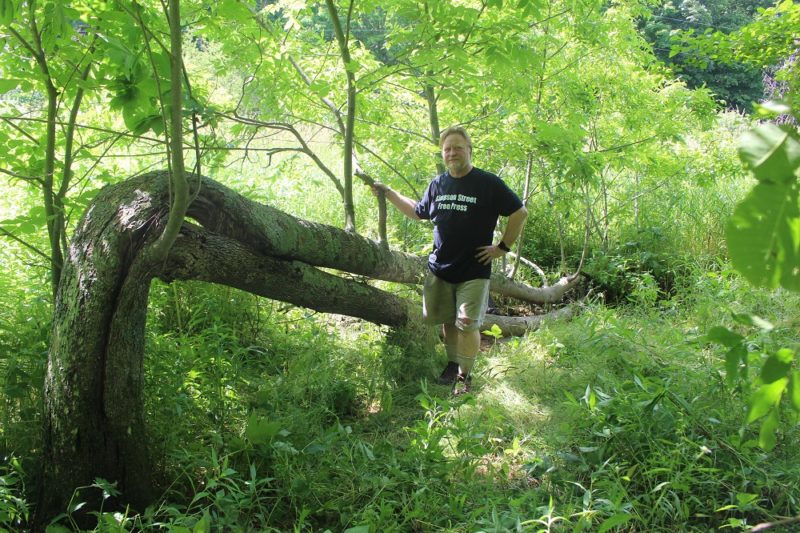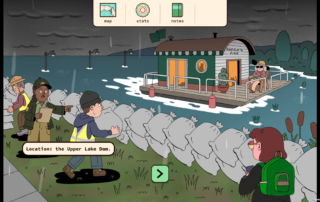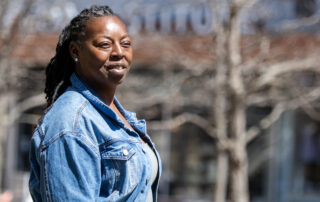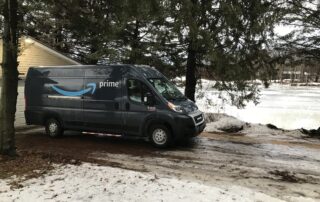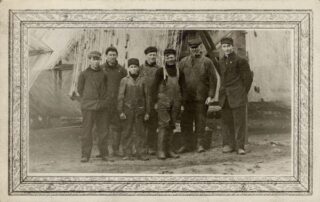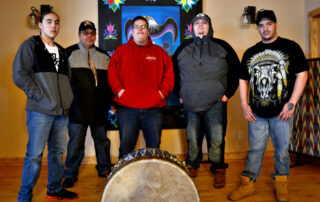Taking care of the land can be a huge responsibility, chock-full of hard work and ethical dilemmas. Writer Bill Lueders shares his own experience in managing his property.
==
A little more than a decade ago, my wife and I acquired a thirteen-acre parcel of mostly wooded land in Richland County. On one of our first visits, a neighbor asked about our intentions.
“Put up a small cabin,” I said. “Take care of the land.”
And that’s what we’ve done. You’re here with me now. You can hear what it sounds like.
We make the trek from Madison about 30 weekends a year, in all seasons. Our cabin is Amish built and wood heated, with electricity but no running water. It’s the land that draws us.
We’ve put in trails, delineated with logs and maintained with weed-whackers. We’ve worked to maximize the woodland’s growth potential, largely by removing trees that are less desirable—like the abundant ash trees that face annihilation by the emerald ash borer.
And we’ve tried to get rid of the invasives. All of them. Briars. Prickly ash. Multiflora rose. Japanese barberry. I have pulled tens of thousands of these by hand. That’s not an exaggeration. I try to yank out the roots, knowing that the ones that don’t come out all the way will come back again. Sometimes, we use chemicals, which work better.
It’s a never-ending battle. Each year there are fewer invasives, but always there are some. It makes me think of Zeno’s Paradox: If I cut the number of invasives in half every year, I’ll never get to zero. It’s maddening.
Taking care of the land is a lot of work—my chainsaw gets much more use than my hammock—and it involves, frankly, a lot of killing. Yanking plants. Chain-sawing trees. Blasting away weeds with a wildly whipping piece of plastic string. It can be very violent. A path is kept open by killing.
But the truth is that it’s not good for the land to be left alone. Not when invasives are ready to turn it into a prickly bramble. Not when trees doomed to die are competing against ones that can thrive. Forestry is about making life-and-death decisions. This tree can live. That one must go.
It’s an enormous responsibility, full of ethical dilemmas.
There is an ash tree on our land about 50 feet long. It is not 50 feet tall. Several years ago, the trunk cracked about four feet from the ground. The trunk is now mostly horizontal. It lies across a small stream that runs through the property.
Last year when we had our seventh 100-year flood in the last 12 years—you do the math—the top of the tree ended up being covered with dirt. It now begins and ends underground, its branches extending straight upward, perpendicular to the fallen trunk, reaching for the sky.
This is not a quality tree. It will never be healthy. It will never be good timber. It should probably be removed, to make room for trees that are more desirable. I will never do that. Look at what this tree has managed to do, to stay alive against all odds. Look at how it gallantly extends its limbs skyward, despite its shattered spine and buried top. Look at how it clings tenaciously to life.
And in the flood last summer, this fallen but living ash tree served as a dam to block debris that would otherwise have clogged my neighbor’s culvert. It served a useful purpose. We removed the debris. This spring, the branches that remain again erupted in leaves. The tree is still alive. We’ll take care of it.
==
SONGS: “Night After Sidewalk” by Kaki King
“Mother Nature’s Son” by Don Latarski
